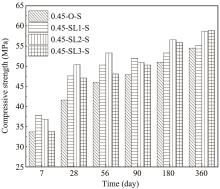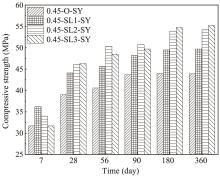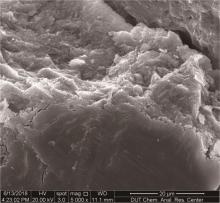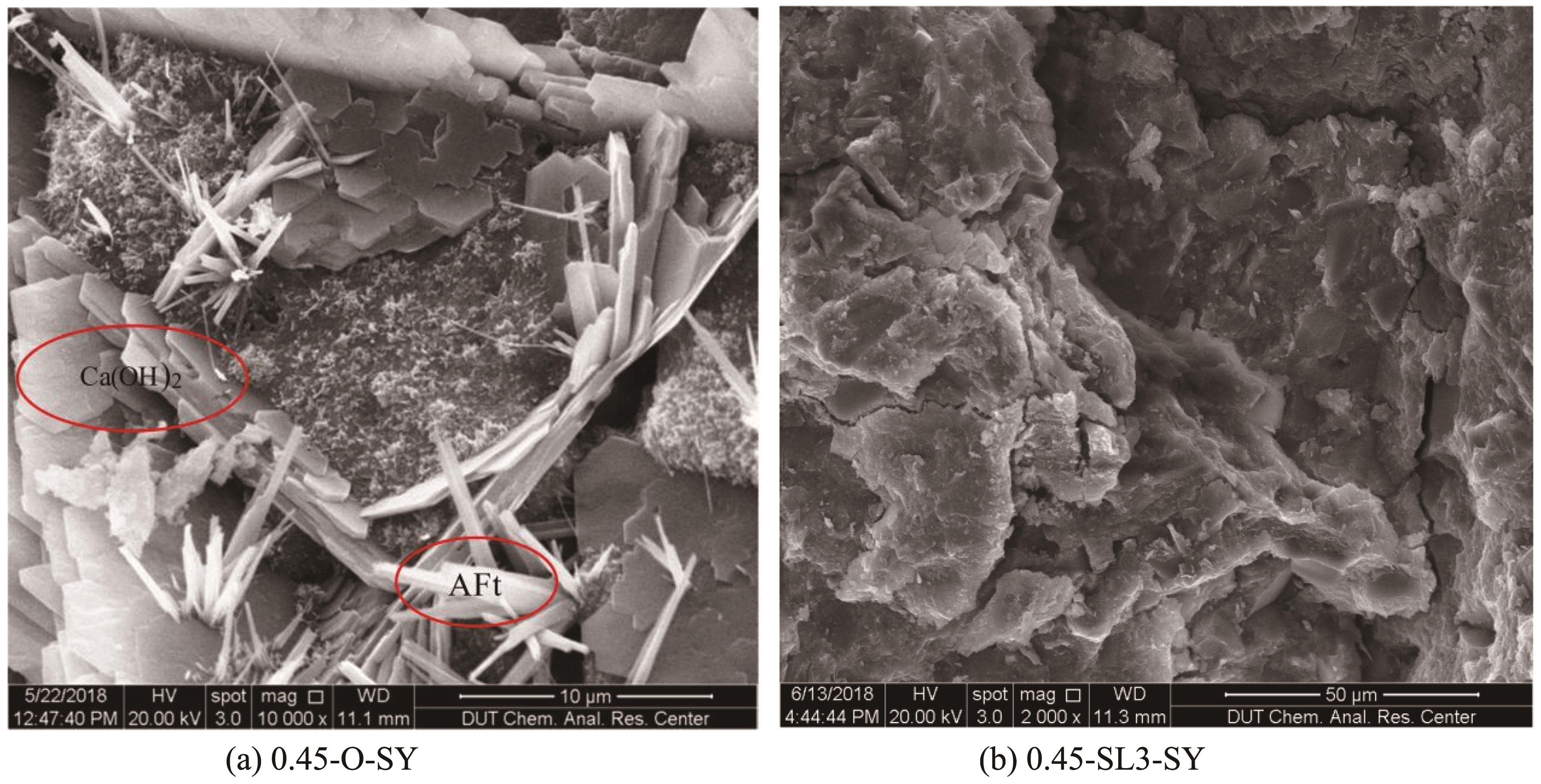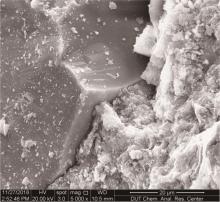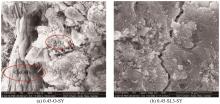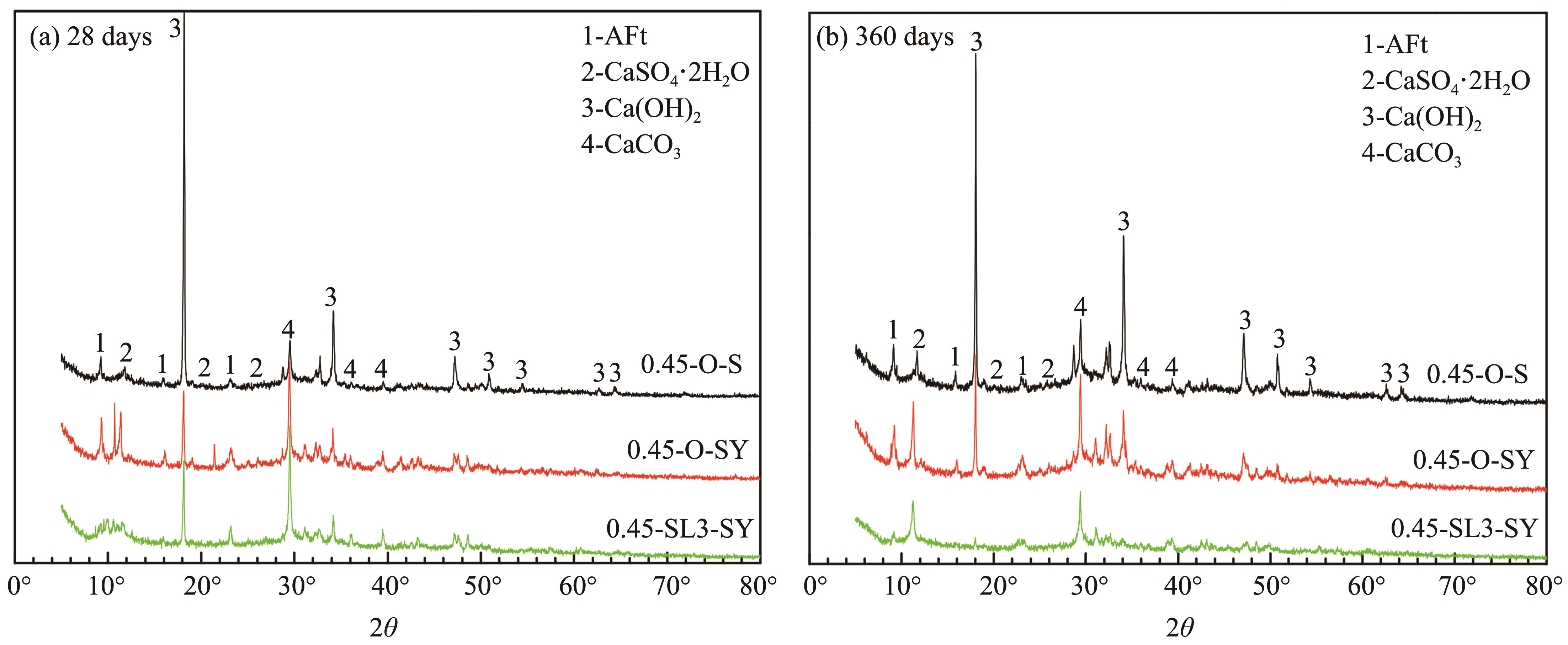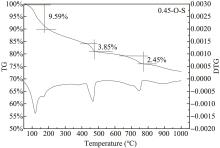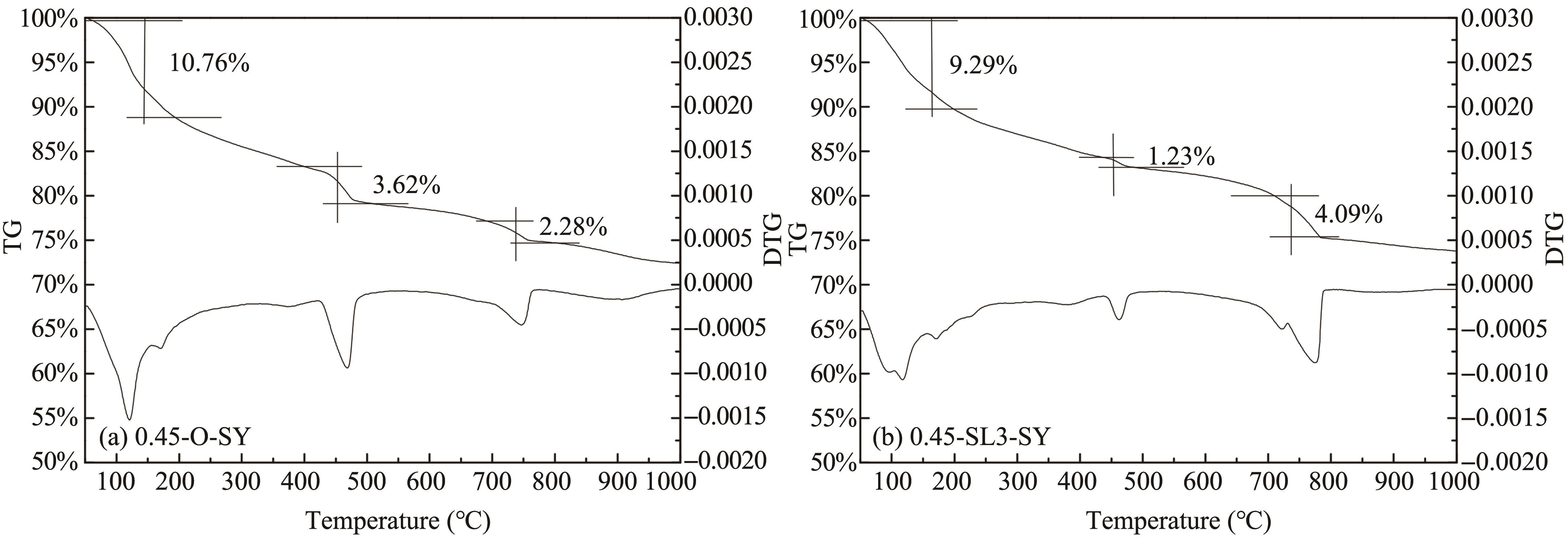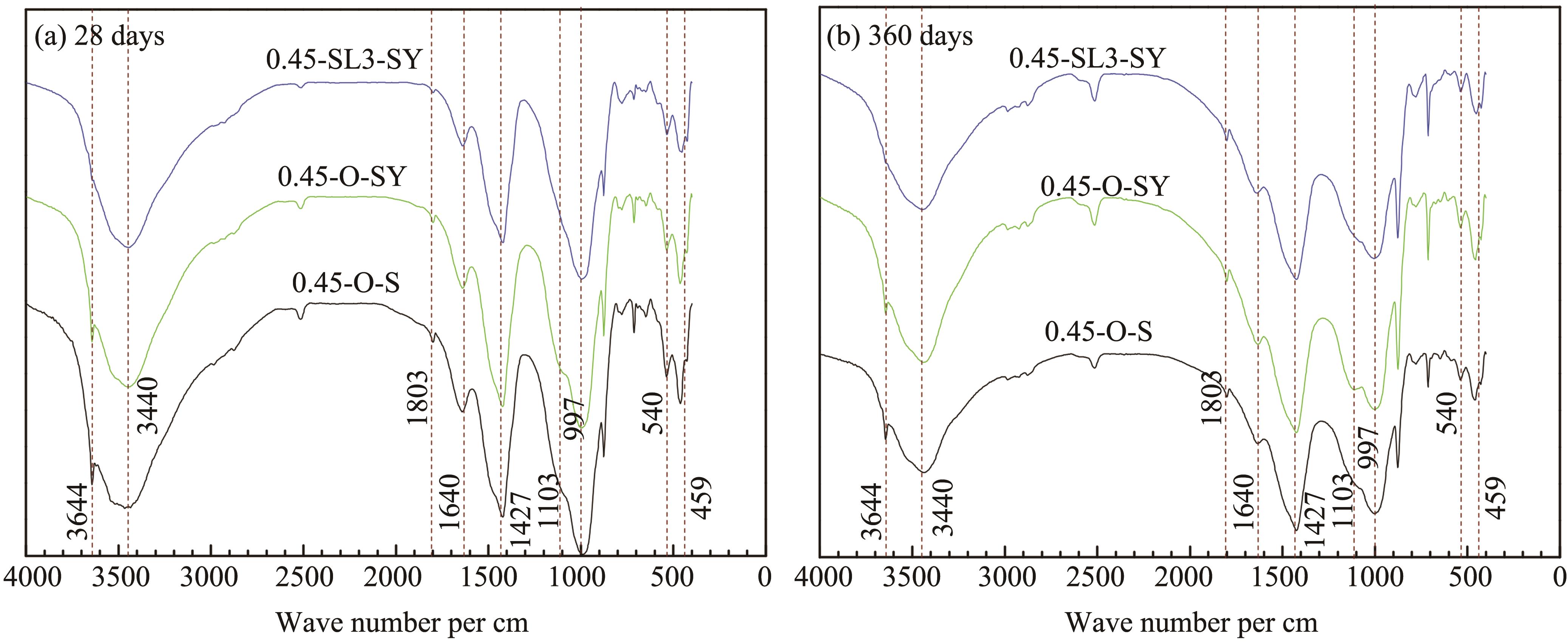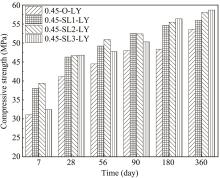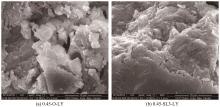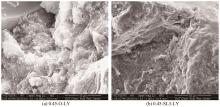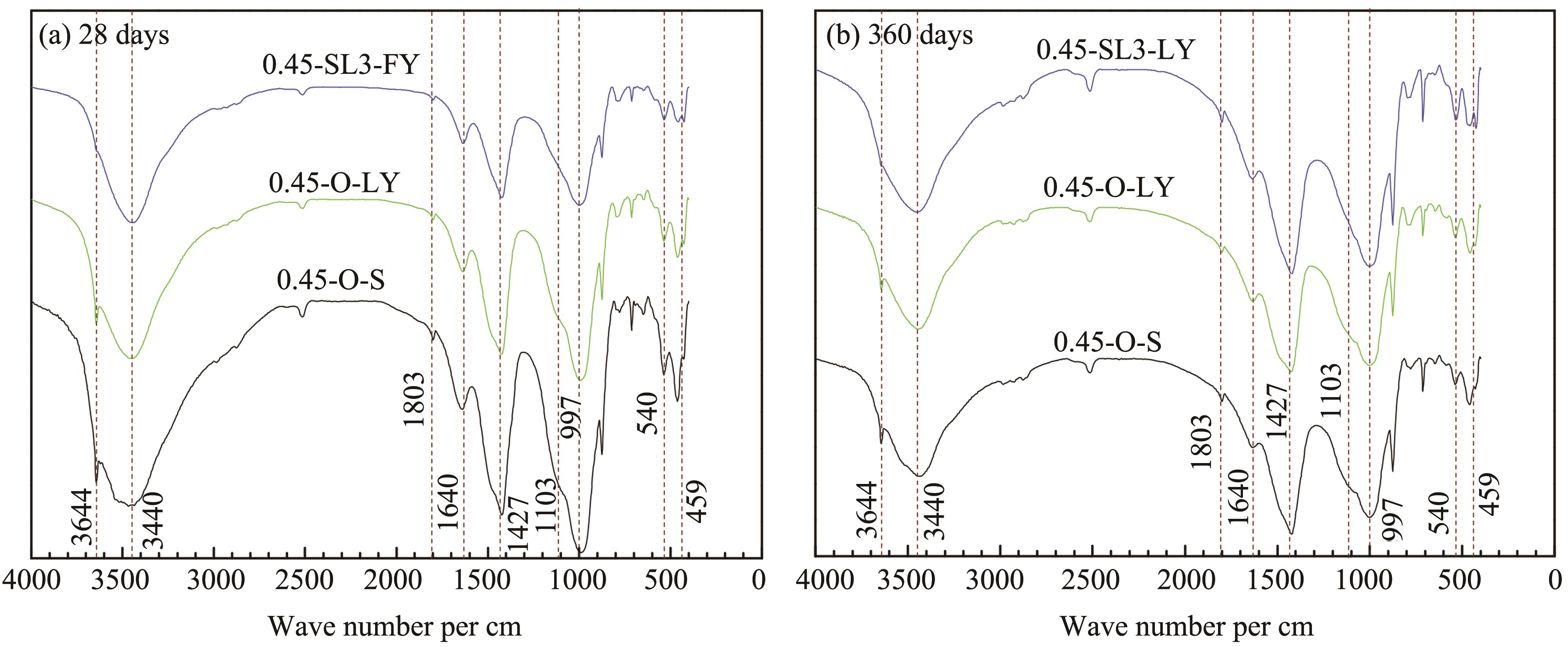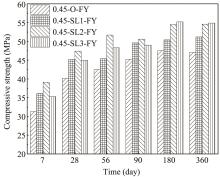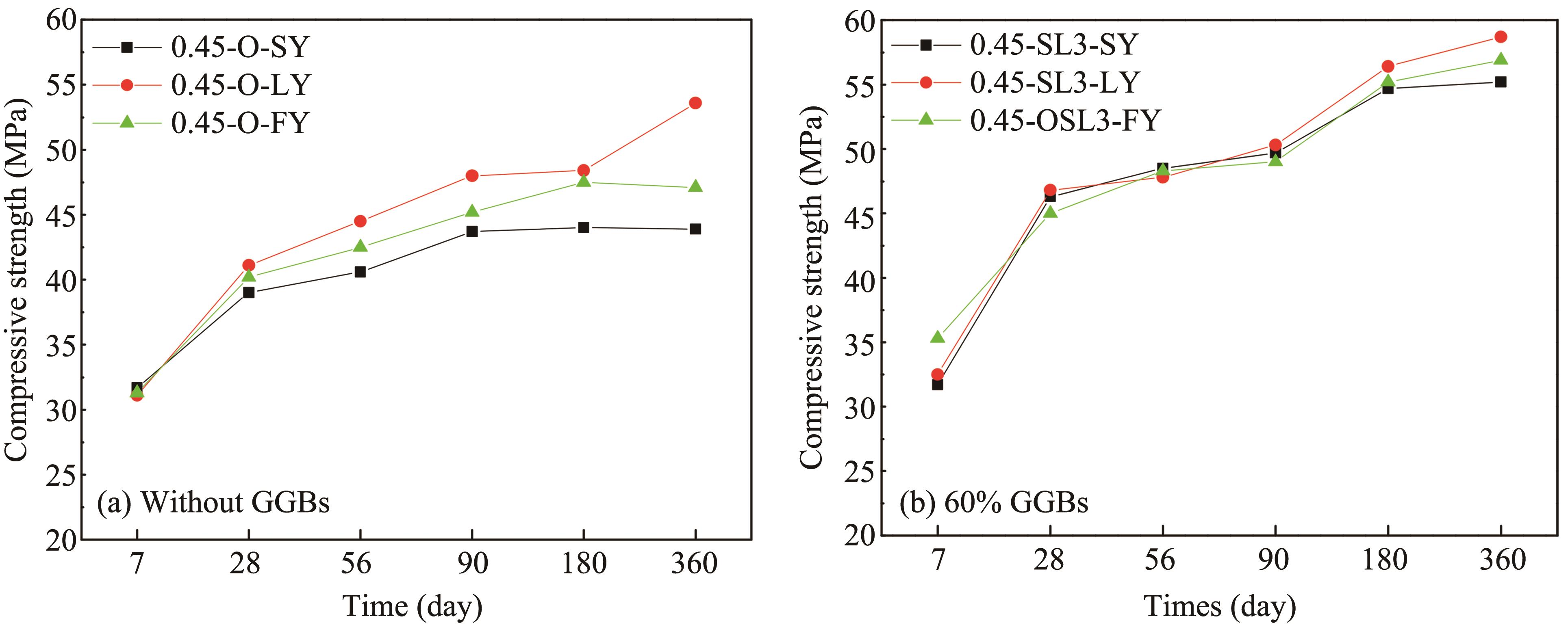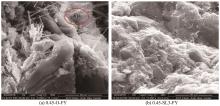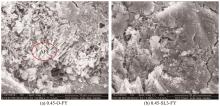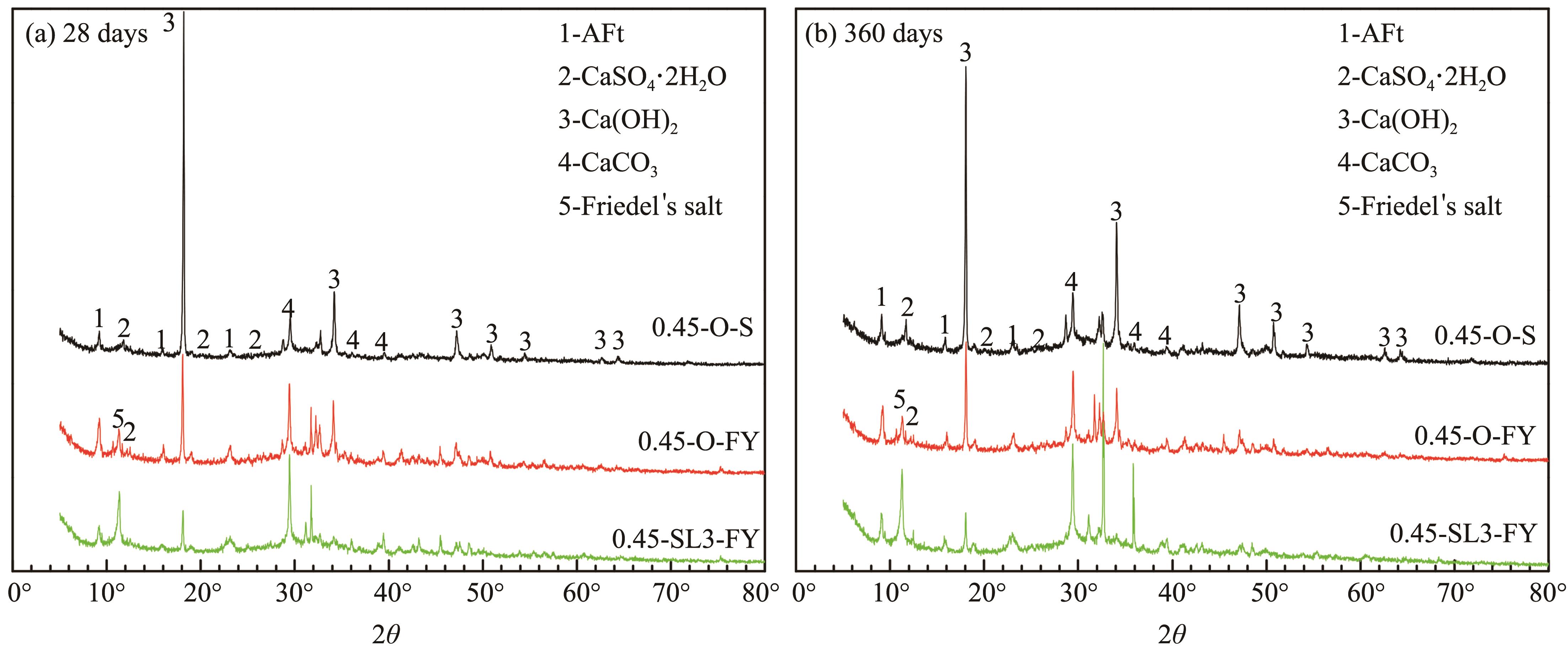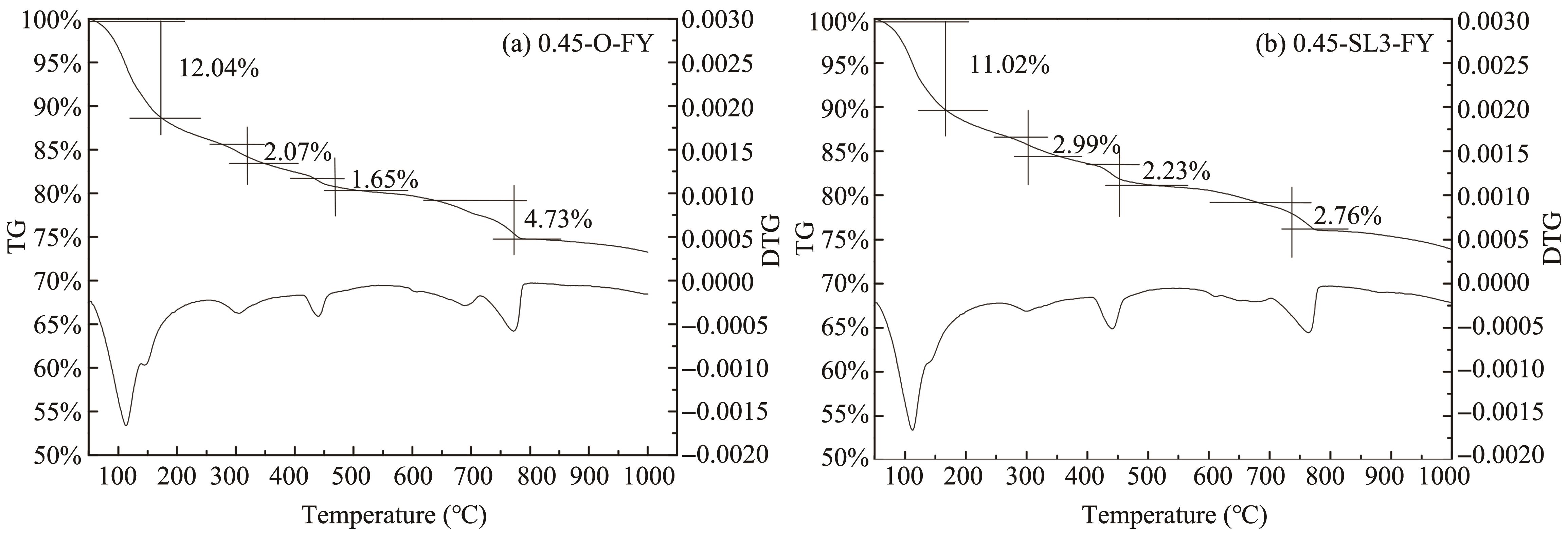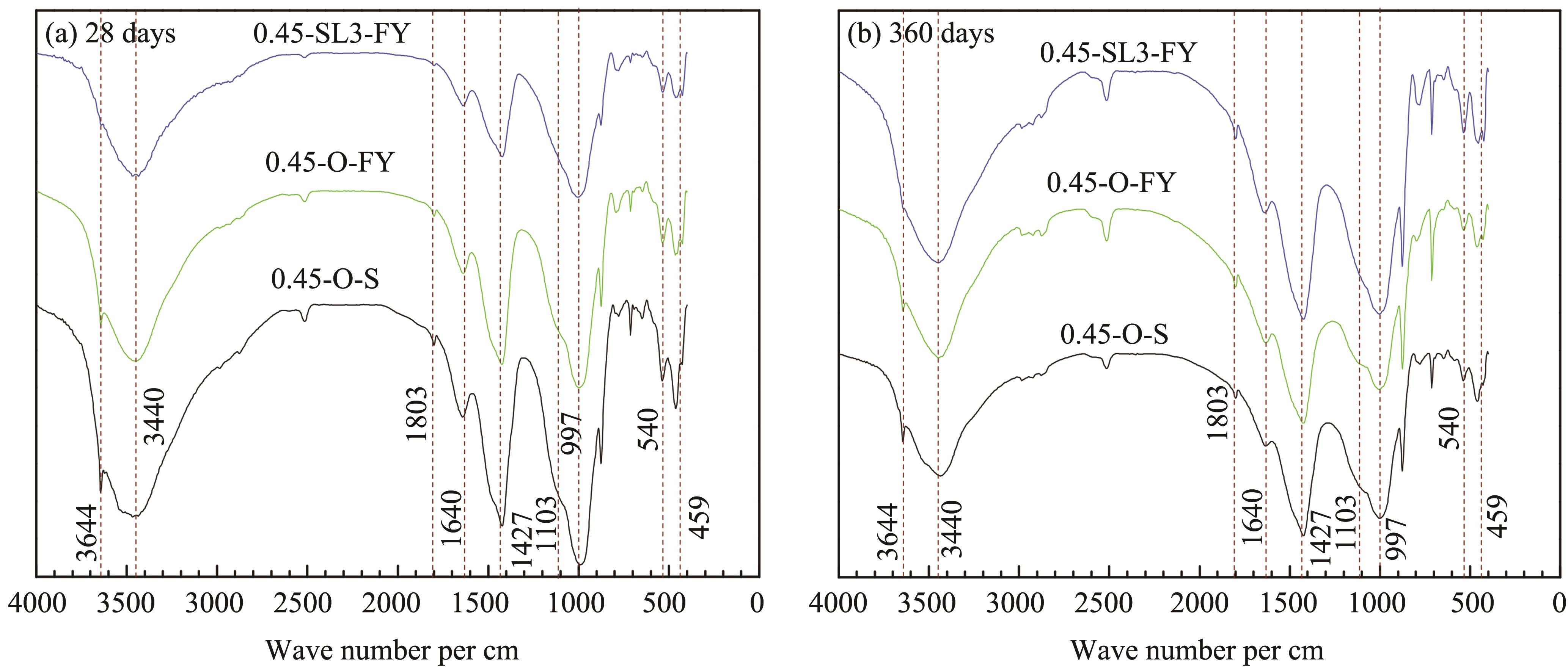Sciences in Cold and Arid Regions ›› 2022, Vol. 14 ›› Issue (2): 120–137.doi: 10.3724/SP.J.1226.2022.21037.
• • 上一篇
Effect of GGBS on performance deterioration of non-dispersible underwater concrete in saline soil
Fang Liu1,2,BaoMin Wang3( ),GuoRong Tao3,Tao Luo1,XiaoSa Yuan1
),GuoRong Tao3,Tao Luo1,XiaoSa Yuan1
- 1.Shaanxi Key Laboratory of Safety and Durability of Concrete Structures, Xijing University, Xi'an, Shaanxi 710123, China
2.State Key Laboratory of Simulation and Regulation of Water Cycle in River Basins, China Institute of Water Resources and Hydropower Research, Beijing 100038, China
3.School of Civil Engineering, Dalian University of Technology, Dalian, Liaoning 116023, China
|
Baek DII, Kim MS, Jang HS, 2004. A study on the charateristics of antiwashout underwater concrete with mineral admixture. Journal of Korea Concrete Institute, 16(6): 777-783. DOI: 10.4334/JKCI.2004.16.6.777 .
doi: 10.4334/JKCI.2004.16.6.777 |
|
|
Csizmadia J, Balázs G, Tamás FD, 2001. Chloride ion binding capacity of aluminoferrites. Cement and Concrete Research, 31(4): 577-588. DOI: 10.1016/S0008-8846(01)00458-6 .
doi: 10.1016/S0008-8846(01)00458-6 |
|
| DL/T 5117 -2000, Test code on non-dispersible underwater concrete. | |
|
Durdziński P, 2016. Hydration of Multi-component Cements Containing Cement Clinker, Slag, Calcareous Fly Ash and Limestone. PhD thesis, Lausanne. DOI: 10.5075/epfl-thesis-6834 .
doi: 10.5075/epfl-thesis-6834 |
|
|
Elbeyli İY, Derun EM, Gülen J, et al., 2003. Thermal analysis of borogypsum and its effects on the physical properties of Portland cement. Cement and Concrete Research, 33(11): 1729-1735. DOI: 10.1016/S0008-8846(03)00110-8 .
doi: 10.1016/S0008-8846(03)00110-8 |
|
|
Goñi S, Guerrero A, 2003. Accelerated carbonation of Friedel's salt in calcium aluminate cement paste. Cement and Concrete Research, 33(1): 21-26. DOI: 10.1016/S0008-8846(02)00910-9 .
doi: 10.1016/S0008-8846(02)00910-9 |
|
| Hewlett PC, 2003. Lea's Chemistry of Cement and Concrete. Butterworth-Heinemann. | |
|
Horszczaruk E, Brzozowski P, 2017. Properties of underwater concretes containing large amount of fly ashes. Procedia Engineering, 196: 97-104. DOI:10.1016/j.proeng.2017. 07.178 .
doi: 10.1016/j.proeng.2017. 07.178 |
|
| Jiang ZW, Sun ZP, Zhang GL, et al., 2001. Study on chloride ion permeability of underwater anti-dispersion concrete. Guangdong Building Materials, (09): 15-17. (in Chinese) | |
| Khayat KH, 1996. Effects of antiwashout admixtures on properties of hardened concrete. ACI Materials Journal, 93(2): 134-146. | |
| Liu ML, Pei L, Du BL, et al., 2018. Nondispersible underwater concrete with high strength. Guangdong Building Materials, 34(08): 10-12. (in Chinese) | |
|
Lothenbach B, Wieland E, 2006. A thermodynamic approach to the hydration of sulphate-resisting Portland cement. Waste Management, 26(7): 706-719. DOI: 10.1016/j.wasman.2006.01.023 .
doi: 10.1016/j.wasman.2006.01.023 |
|
| Lu R, 2015. Influence of Mineral Admixtures on Chloride Binding Capacity of Concrete. PhD thesis, Harbin Institute of Technology. (in Chinese) | |
|
Luo R, Cai Y, Wang C, et al., 2003. Study of chloride binding and diffusion in GGBS concrete. Cement and Concrete Research, 33(1): 1-7. DOI: 10.1016/S0008-8846(02)00712-3 .
doi: 10.1016/S0008-8846(02)00712-3 |
|
|
Niu JS, Ma XW, 2011. Effect of fly ash on the workability of nondispersible underwater concrete. Advanced Materials Research, 194-196: 942-946. DOI:10.4028/www.scientific.net/AMR.194-196.942 .
doi: 10.4028/www.scientific.net/AMR.194-196.942 |
|
|
Saikia N, Kato S, Kojima T, 2006. Thermogravimetric investigation on the chloride binding behaviour of MK-lime paste. Thermochimica Acta, 444(1): 16-25. DOI: 10.1016/j.tca.2006.02.012 .
doi: 10.1016/j.tca.2006.02.012 |
|
|
Shi YX, Feng NQ, Hao TY, 2000. Influence of ultrafine powder on the fluidity and strength of cement paste. Advances in Cement Research, 12(3): 89-95. DOI:10.1680/adcr. 2000. 12.3.89 .
doi: 10.1680/adcr. 2000. 12.3.89 |
|
|
Shi YX, Matsui I, Guo YJ, 2004. A study on the effect of fine mineral powders with distinct vitreous contents on the fluidity and rheological properties of concrete. Cement and Concrete Research, 34(8): 1381-1387. DOI: 10.1016/j.cemconres.2003.12.031 .
doi: 10.1016/j.cemconres.2003.12.031 |
|
|
Shimada Y, Young JF, 2004. Thermal stability of ettringite in alkaline solutions at 80 °C. Cement and Concrete Research, 34(12): 2261-2268. DOI: 10.1016/j.cemconres.2004.04.008 .
doi: 10.1016/j.cemconres.2004.04.008 |
|
|
Silva DA, Roman HR, Gleize PJP, 2002. Evidences of chemical interaction between EVA and hydrating Portland cement. Cement and Concrete Research, 32(9): 1383-1390. DOI: 10.1016/S0008-8846(02)00805-0 .
doi: 10.1016/S0008-8846(02)00805-0 |
|
|
Stepkowska ET, Blanes JM, Franco F, et al., 2004. Phase transformation on heating of an aged cement paste. Thermochimica Acta, 420(1): 79-87. DOI: 10.1016/j.tca.2003.11.057 .
doi: 10.1016/j.tca.2003.11.057 |
|
|
Trezza, MA, Lavat AE, 2001. Analysis of the system 3CaO⋅Al2O3-CaSO4⋅2H2O-CaCO3-H2O by FT-IR spectroscopy. Cement and Concrete Research, 31(6): 869-872. DOI: 10.1016/S0008-8846(01)00502-6 .
doi: 10.1016/S0008-8846(01)00502-6 |
|
| Wang DY, Chen SX, 2006. Durability study of underwater nondispersible concrete. Journal of Architecture and Civil Engineering, (01): 54-58. (in Chinese) | |
| Wang X, 2013. Investigation on Bonding and Microstructure of Chloride Ions During Transport in Cement-based Materials. PhD thesis, Hunan University. (in Chinese) | |
| Wei R, 2005. Influence of slag powder on mechanical properties and working performance of concrete. Cement Engineering, 2005(02): 35-38. (in Chinese) | |
|
Ye G, Liu X, Schutter GD, et al., 2007. Influence of limestone powder used as filler in SCC on hydration and microstructure of cement pastes. Cement and Concrete Composites, 29(2): 94-102. DOI: 10.1016/j.cemconcomp.2006.09.003 .
doi: 10.1016/j.cemconcomp.2006.09.003 |
|
| Zhang M, Wang FM, Ye K, et al., 2016. Effect of fly ash and slag on anti-washout underwater concrete. Bulletin of the Chinese Ceramic Society, 35(08): 2611-2616. (in Chinese) | |
| Zhang M, Zhou ST, Wang FM, et al., 2017. Study on effect of key parameters on properties of anti-washout underwater concrete. Concrete, (08): 140-155. (in Chinese) | |
| Zhao J, Wang JJ, Wu HJ, 2015. Law of strength development of non-dispersible underwater concrete in seawater. Concrete, (08): 31-34. (in Chinese) | |
| Zhao J, Zhu ZP, Wu HJ, 2017. Durability study of non-dispersion underwater concrete in sea water environment. Journal of Dalian Jiaotong University, 38(01): 86-89. (in Chinese) | |
|
Zhou Q, Glasser FP, 2001. Thermal stability and decomposition mechanisms of ettringite at <120°C. Cement and Concrete Research, 31(9): 1333-1339. DOI: 10.1016/S0008-8846(01)00558-0 .
doi: 10.1016/S0008-8846(01)00558-0 |
| No related articles found! |
|
||

